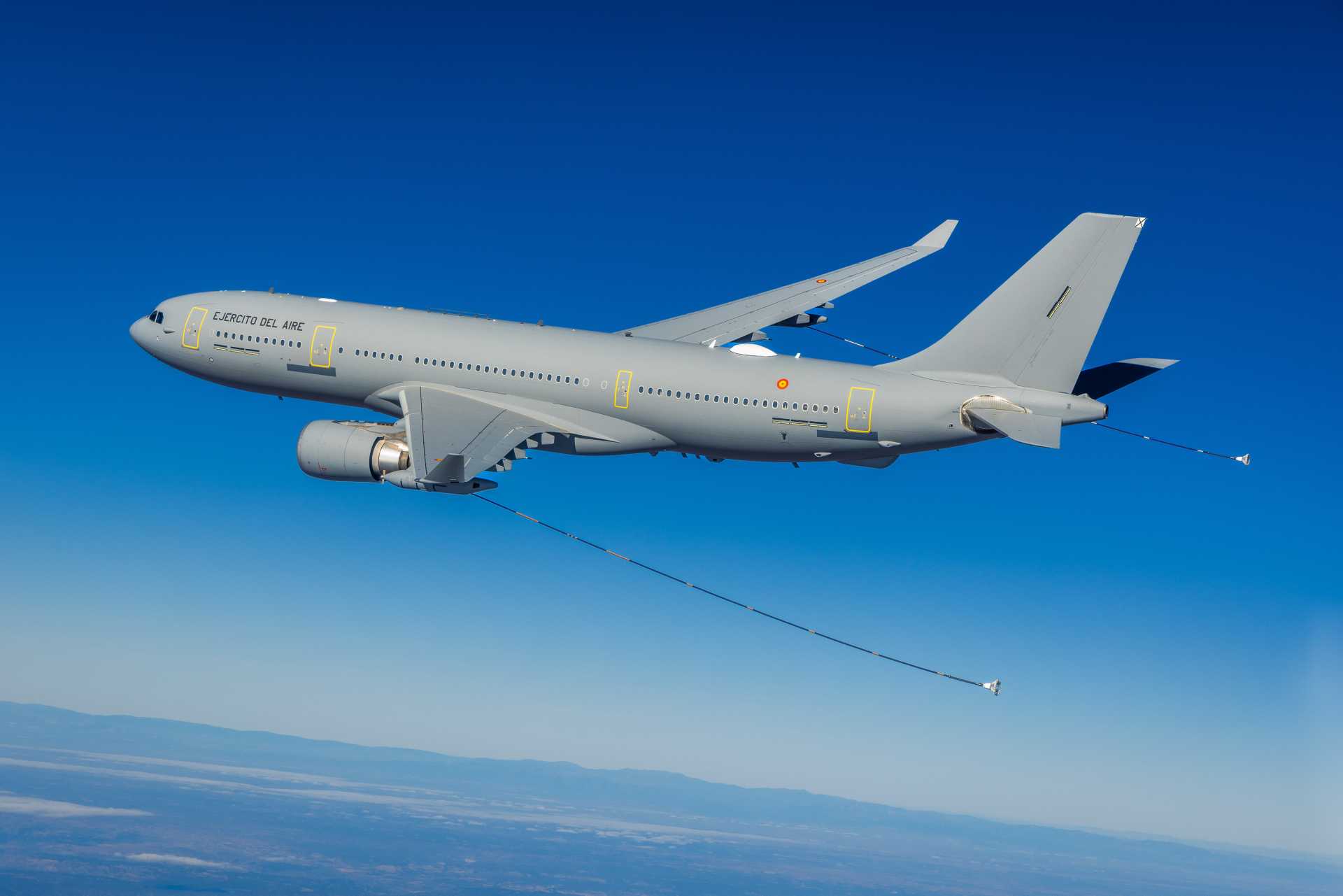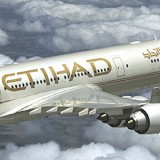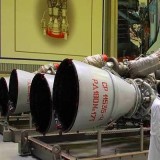Spain receives first European Airbus A330 MRTT multi-role aircraft to replace US-made Boeing 707 tankers

{loadposition bannertop}
{loadposition sidebarpub}
On April 11, 2025, the Spanish Air and Space Force received its first Airbus A330 MRTT (Multi-Role Tanker Transport) aircraft, which has officially entered service with the 45th Wing at Torrejón de Ardoz Air Base, near Madrid. The aircraft was delivered from Airbus’s military conversion centre located in Getafe, Madrid. This delivery is the first of three A330 MRTTs acquired by the Spanish Ministry of Defence in November 2021. The remaining two aircraft are currently undergoing conversion and are expected to enter service in 2025 and 2026.Follow Army Recognition on Google News at this link
The A330 MRTT (Multi-Role Tanker Transport) is a military derivative of the Airbus A330-200 commercial airliner, adapted for both strategic transport and air-to-air refuelling. (Picture source: Airbus)
Spain’s decision to acquire the A330 MRTT followed earlier considerations that began in 2014, when the Spanish Secretary of State for Defence confirmed that negotiations had started with Airbus regarding a potential switch from part of Spain’s A400M order to an undisclosed number of MRTTs. In 2016, the Spanish Ministry of Defence publicly announced its intention to procure two MRTTs to replace the Boeing 707 tankers in service. In 2020, Spain purchased three A330-200 airliners from Iberia that had been retired due to the economic impact of the COVID-19 pandemic. These were selected for conversion into MRTTs. The third aircraft was sent directly to Airbus’s Getafe facility for conversion, while the other two were temporarily used in their original passenger configuration for military airlift missions, including the evacuation of Spanish nationals from Niger and Sudan, and during the 2024 Pacific Skies exercise. In January 2024, the first converted MRTT began test flights. The delivery schedule was organized to ensure that two aircraft would remain in operational use at any given time.
As of 31 March 2025, 76 A330 MRTTs have been ordered by 15 nations, and 64 aircraft have been delivered. The aircraft is currently operated by Australia, Canada, France, the United Kingdom, Spain, the United Arab Emirates, Saudi Arabia, Singapore, South Korea, and the NATO Multinational MRTT Fleet (MMF), which includes Germany, the Netherlands, Luxembourg, Norway, Belgium, and the Czech Republic. Denmark confirmed its intention to join the MMF on 25 March 2025, contributing the equivalent of two refuelling units. Brazil has also procured two A330 aircraft for conversion, while Indonesia’s Ministry of Defence confirmed in 2023 that the A330 MRTT is under contract as part of a broader defence equipment acquisition program. Egypt and India have expressed interest in the MRTT as part of past and ongoing tender processes. The MRTT+, a new variant based on the A330neo and powered by Rolls-Royce Trent 7000 engines, was introduced by Airbus at the 2024 Farnborough Air Show and is designed to offer an 8% improvement in fuel efficiency compared to the current version.
The A330 MRTT (Multi-Role Tanker Transport) is a military derivative of the Airbus A330-200 commercial airliner, adapted for both strategic transport and air-to-air refuelling. The type was certified by Spanish authorities in 2010, and the first MRTT aircraft entered operational service with the Royal Australian Air Force in June 2011. The MRTT incorporates design elements and operational experience from earlier Airbus tanker programs, including the A310 MRTT. The aircraft supports a wide range of refuelling operations and is fully interoperable with multiple receiver types used by NATO and partner nations. Since its entry into service, it has accumulated over 310,000 flight hours and 270,000 aerial refuelling contacts. Several nations, including Australia, France, Saudi Arabia, the United Arab Emirates, and members of the MMF, have placed repeat orders.
The aircraft’s flexibility extends beyond its tanker mission, as the wide-body cabin can transport up to 300 troops in economy-class configuration or 268 in a two-class layout. (Picture source: Airbus)
The A330 MRTT has a fuel capacity of 111,000 kilograms, carried in the aircraft’s standard tanks without requiring additional tanks in the lower deck. It offers several refuelling systems, including the Airbus Aerial Refuelling Boom System (ARBS) with a flow rate of 3,600 kg/min (1,200 US gal/min), Cobham 905E under-wing hose-and-drogue pods with 1,300 kg/min (420 US gal/min), and a Cobham 805E Fuselage Refuelling Unit (FRU) capable of 1,800 kg/min (600 US gal/min). The MRTT can refuel aircraft fitted with both receptacle and probe systems. It is also equipped with a Universal Aerial Refuelling Receptacle Slipway Installation (UARRSI), enabling the aircraft itself to receive fuel in-flight. The Enhanced Vision System (EVS) offers a 270° field of view, with high-definition 2D/3D digital imaging to support all-weather and night-time refuelling operations.
In addition to its tanker role, the MRTT supports troop and cargo transport missions. The aircraft can carry up to 300 passengers in airline configuration, or a combination of passengers and freight up to a maximum payload of 45 tonnes (99,000 pounds). The lower deck can accommodate up to 27 LD3 containers or eight NATO-standard military pallets. The MRTT can also be configured for aeromedical evacuation (MEDEVAC) missions, with options for up to 130 stretchers, 20 medical personnel, and 100 seated passengers. Cabin configurations are modular, allowing the aircraft to be reconfigured depending on mission requirements. It can also be fitted with a removable VIP transport module. The MRTT can simultaneously perform airlift and MEDEVAC roles.
The cockpit of the A330 MRTT is derived from the civil A330’s glass cockpit, using Fly-by-Wire controls and Human-Machine Interface (HMI) systems. The refuelling operations are managed via an Air Refuelling Console located within the flight deck, which also supports training and mission planning. The aircraft is certified for operation by two pilots and one refuelling operator, with the option to add a second operator or mission system operator. The Smart MRTT configuration includes features for enhanced connectivity (Link 16, SATCOM), automation (including Automatic Air-to-Air Refuelling, or A3R), and the potential integration of command, control, communications, and intelligence (C3I) systems.
The general characteristics of the A330 MRTT include an overall length of 58.80 meters, a wingspan of 60.30 meters, and a height of 17.40 meters. The aircraft has a maximum take-off weight of 233,000 kg, a maximum landing weight of 182,000 kg, and a maximum fuel weight of 111,000 kg. It can cruise at speeds of Mach 0.82 with a ceiling of 12,600 meters (41,500 feet). The ferry range without payload reaches 16,100 kilometers. With 40 tonnes of payload, the range is 8,400 km; with 30 tonnes, it is 10,200 km; and with 20 tonnes, it is 12,000 km. The A330 MRTT can support deployment missions transporting four fighter aircraft, 25 tonnes of payload, and 50 passengers over 5,200 km, or refuel four fighters over 6,700 km without payload. The take-off distance at MTOW is 2,800 meters, and the landing distance at MLW is 1,750 meters. Two engine options are available: General Electric CF6-80E1A3 (320 kN) or Rolls-Royce Trent 772B (316 kN).
The A330 MRTT tanker aircraft is compatible with a broad range of receivers, including probe-equipped aircraft such as Eurofighter Typhoon, Rafale, F/A-18, AV-8B, Mirage 2000, and JAS 39 Gripen. (Picture source: Airbus)

{loadposition bannertop}
{loadposition sidebarpub}
On April 11, 2025, the Spanish Air and Space Force received its first Airbus A330 MRTT (Multi-Role Tanker Transport) aircraft, which has officially entered service with the 45th Wing at Torrejón de Ardoz Air Base, near Madrid. The aircraft was delivered from Airbus’s military conversion centre located in Getafe, Madrid. This delivery is the first of three A330 MRTTs acquired by the Spanish Ministry of Defence in November 2021. The remaining two aircraft are currently undergoing conversion and are expected to enter service in 2025 and 2026.
Follow Army Recognition on Google News at this link
The A330 MRTT (Multi-Role Tanker Transport) is a military derivative of the Airbus A330-200 commercial airliner, adapted for both strategic transport and air-to-air refuelling. (Picture source: Airbus)
Spain’s decision to acquire the A330 MRTT followed earlier considerations that began in 2014, when the Spanish Secretary of State for Defence confirmed that negotiations had started with Airbus regarding a potential switch from part of Spain’s A400M order to an undisclosed number of MRTTs. In 2016, the Spanish Ministry of Defence publicly announced its intention to procure two MRTTs to replace the Boeing 707 tankers in service. In 2020, Spain purchased three A330-200 airliners from Iberia that had been retired due to the economic impact of the COVID-19 pandemic. These were selected for conversion into MRTTs. The third aircraft was sent directly to Airbus’s Getafe facility for conversion, while the other two were temporarily used in their original passenger configuration for military airlift missions, including the evacuation of Spanish nationals from Niger and Sudan, and during the 2024 Pacific Skies exercise. In January 2024, the first converted MRTT began test flights. The delivery schedule was organized to ensure that two aircraft would remain in operational use at any given time.
As of 31 March 2025, 76 A330 MRTTs have been ordered by 15 nations, and 64 aircraft have been delivered. The aircraft is currently operated by Australia, Canada, France, the United Kingdom, Spain, the United Arab Emirates, Saudi Arabia, Singapore, South Korea, and the NATO Multinational MRTT Fleet (MMF), which includes Germany, the Netherlands, Luxembourg, Norway, Belgium, and the Czech Republic. Denmark confirmed its intention to join the MMF on 25 March 2025, contributing the equivalent of two refuelling units. Brazil has also procured two A330 aircraft for conversion, while Indonesia’s Ministry of Defence confirmed in 2023 that the A330 MRTT is under contract as part of a broader defence equipment acquisition program. Egypt and India have expressed interest in the MRTT as part of past and ongoing tender processes. The MRTT+, a new variant based on the A330neo and powered by Rolls-Royce Trent 7000 engines, was introduced by Airbus at the 2024 Farnborough Air Show and is designed to offer an 8% improvement in fuel efficiency compared to the current version.
The A330 MRTT (Multi-Role Tanker Transport) is a military derivative of the Airbus A330-200 commercial airliner, adapted for both strategic transport and air-to-air refuelling. The type was certified by Spanish authorities in 2010, and the first MRTT aircraft entered operational service with the Royal Australian Air Force in June 2011. The MRTT incorporates design elements and operational experience from earlier Airbus tanker programs, including the A310 MRTT. The aircraft supports a wide range of refuelling operations and is fully interoperable with multiple receiver types used by NATO and partner nations. Since its entry into service, it has accumulated over 310,000 flight hours and 270,000 aerial refuelling contacts. Several nations, including Australia, France, Saudi Arabia, the United Arab Emirates, and members of the MMF, have placed repeat orders.

The aircraft’s flexibility extends beyond its tanker mission, as the wide-body cabin can transport up to 300 troops in economy-class configuration or 268 in a two-class layout. (Picture source: Airbus)
The A330 MRTT has a fuel capacity of 111,000 kilograms, carried in the aircraft’s standard tanks without requiring additional tanks in the lower deck. It offers several refuelling systems, including the Airbus Aerial Refuelling Boom System (ARBS) with a flow rate of 3,600 kg/min (1,200 US gal/min), Cobham 905E under-wing hose-and-drogue pods with 1,300 kg/min (420 US gal/min), and a Cobham 805E Fuselage Refuelling Unit (FRU) capable of 1,800 kg/min (600 US gal/min). The MRTT can refuel aircraft fitted with both receptacle and probe systems. It is also equipped with a Universal Aerial Refuelling Receptacle Slipway Installation (UARRSI), enabling the aircraft itself to receive fuel in-flight. The Enhanced Vision System (EVS) offers a 270° field of view, with high-definition 2D/3D digital imaging to support all-weather and night-time refuelling operations.
In addition to its tanker role, the MRTT supports troop and cargo transport missions. The aircraft can carry up to 300 passengers in airline configuration, or a combination of passengers and freight up to a maximum payload of 45 tonnes (99,000 pounds). The lower deck can accommodate up to 27 LD3 containers or eight NATO-standard military pallets. The MRTT can also be configured for aeromedical evacuation (MEDEVAC) missions, with options for up to 130 stretchers, 20 medical personnel, and 100 seated passengers. Cabin configurations are modular, allowing the aircraft to be reconfigured depending on mission requirements. It can also be fitted with a removable VIP transport module. The MRTT can simultaneously perform airlift and MEDEVAC roles.
The cockpit of the A330 MRTT is derived from the civil A330’s glass cockpit, using Fly-by-Wire controls and Human-Machine Interface (HMI) systems. The refuelling operations are managed via an Air Refuelling Console located within the flight deck, which also supports training and mission planning. The aircraft is certified for operation by two pilots and one refuelling operator, with the option to add a second operator or mission system operator. The Smart MRTT configuration includes features for enhanced connectivity (Link 16, SATCOM), automation (including Automatic Air-to-Air Refuelling, or A3R), and the potential integration of command, control, communications, and intelligence (C3I) systems.
The general characteristics of the A330 MRTT include an overall length of 58.80 meters, a wingspan of 60.30 meters, and a height of 17.40 meters. The aircraft has a maximum take-off weight of 233,000 kg, a maximum landing weight of 182,000 kg, and a maximum fuel weight of 111,000 kg. It can cruise at speeds of Mach 0.82 with a ceiling of 12,600 meters (41,500 feet). The ferry range without payload reaches 16,100 kilometers. With 40 tonnes of payload, the range is 8,400 km; with 30 tonnes, it is 10,200 km; and with 20 tonnes, it is 12,000 km. The A330 MRTT can support deployment missions transporting four fighter aircraft, 25 tonnes of payload, and 50 passengers over 5,200 km, or refuel four fighters over 6,700 km without payload. The take-off distance at MTOW is 2,800 meters, and the landing distance at MLW is 1,750 meters. Two engine options are available: General Electric CF6-80E1A3 (320 kN) or Rolls-Royce Trent 772B (316 kN).

The A330 MRTT tanker aircraft is compatible with a broad range of receivers, including probe-equipped aircraft such as Eurofighter Typhoon, Rafale, F/A-18, AV-8B, Mirage 2000, and JAS 39 Gripen. (Picture source: Airbus)




